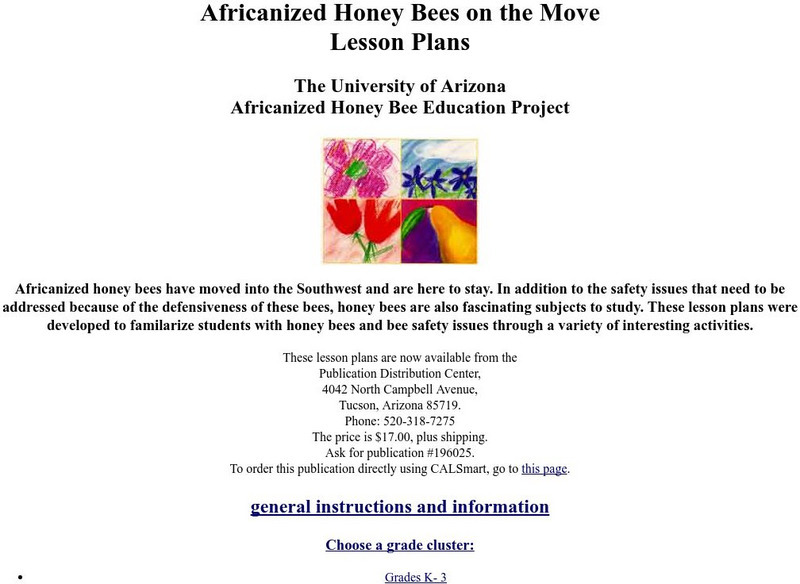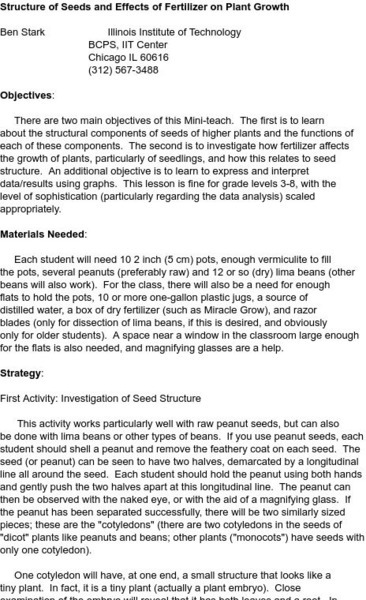Curated OER
Biology: Howler Monkeys Tell All
Students examine a PBS special about howler monkeys as an introduction to scientific forensic investigative methods. In groups, they conduct a host of experiments containing clues which point to discovery. By challenging assumptions,...
Curated OER
Baga Drum
Students examine a Baga Drum in order to explore the history of the Baga people of West Africa. In this art history lesson, students recognize figures used in Baga Drum design that represent aspects of Baga culture. They also design and...
Curated OER
Influential Scientists Spiral Puzzle
In this influential scientists worksheet, students use 8 clues given at the bottom of the page to complete a word puzzle. Worksheet contains links to additional activities.
Curated OER
Science Quiz-General Knowledge
In this science quiz worksheet, students complete a set of 20 true or false questions covering a variety of general science topics. An answer key is included.
Curated OER
Hormone-Induced Plant Propagation Lab using Carrot Root Cultures
Learners evaluate the importance of hormones in living things. For this biology lesson, students experiment on carrots to differentiate how humans and plants reproduce. They collect data from experiment to answer analysis questions.
Curated OER
Dig Magazine Archeology Quiz #106
In this Dig Magazine archeology quiz, students answer 12 multiple choice questions complementing the October 2009 issue. Page contains answer and additional resources link.
Alabama Learning Exchange
Alex: Botany Scavenger Hunt Where's the Ginkgo?
Students use a science nature journal to log in plants native to Alabama. They sketch pictures of leaves, identify the special characteristics of the plant, and describe the environment where it was found. They also research special...
Alabama Learning Exchange
Alex: The Circles of Life
This is an inquiry based cooperative learning unit that can be used in biology as a graduation exam review or in botany for a nine week project. The students will learn the life cycle of mosses, ferns, gymnosperms and angiosperms. The...
Utah Education Network
Uen: 1st Grade Act: 22: Retelling the Tiny Seed
This instructional activity engages students in story retelling to Eric Carle's book, The Tiny Seed. Students will participate in interactive storytelling as they write sentences and illustrate pictures about seed travel.
Discovery Education
Discovery Education: Pollination Parties
This lesson helps students understand the concept of pollination. Objectives, materials, procedures, adaptations, discussion questions, evaluation, extensions, suggested readings, links, vocabulary, and academic standards are all included!
Polk Brothers Foundation Center for Urban Education at DePaul University
De Paul University: Center for Urban Education: I Like Plants [Pdf]
"I Like Plants" is a one page, realistic fiction, reading passage about a person who loves plants and became a botanist; now she teaches her college students about plants and ecology. It is followed by constructed-response questions...
Science Education Resource Center at Carleton College
Serc: Identifying Plant Family Characteristics
Young scholars make observations of similarities and differences between three types of garden plants to determine why they are grouped together in one plant family.
University of Arizona
University of Arizona: Africanized Honey Bees on the Move
This is a lesson plan for grades 9 - 12. There are worksheets that can be printed out. Each activity and objective is stated.
Science and Mathematics Initiative for Learning Enhancement (SMILE)
Smile: Investigating the Structure of the Flower
This lesson plan has students make a model of a flower's structure using clay, toothpicks, and construction paper.
Science and Mathematics Initiative for Learning Enhancement (SMILE)
Smile: Structure of Seeds and Effects of Fertilizer on Plants
In this lesson plan, students identify parts of seeds and the effect of fertilizer on their germination and development.
Middle School Science
Middle School Science: Observing Tree Rings
In the lab experiment site, you will determine the age of a tree, see if you can determine what years had more precipitation than others, and label the cross section of a tree: bark, heartwood, sapwood, and rings.
Other popular searches
- Famous Scientists Botany
- Botany Plants
- Botany Flowers
- Botany Lesson Plans
- Botany Lessons on Fruit
- Botany Collection
- Botany Lessons
- Scientific Method Botany
- Agriculture Botany
- Lewis and Clark, Botany
- Botany Current Event
- Botany Scavenger Hunt

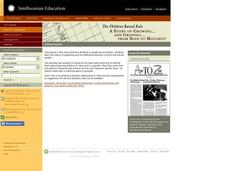
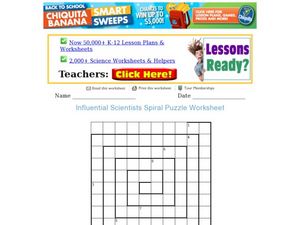

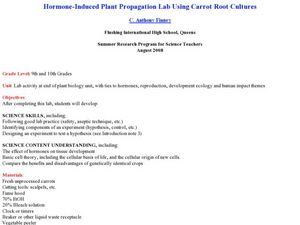



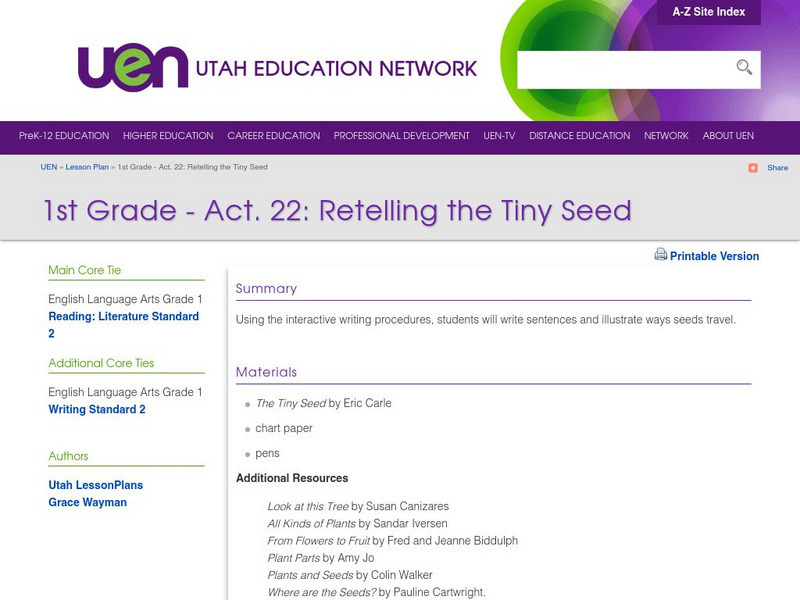
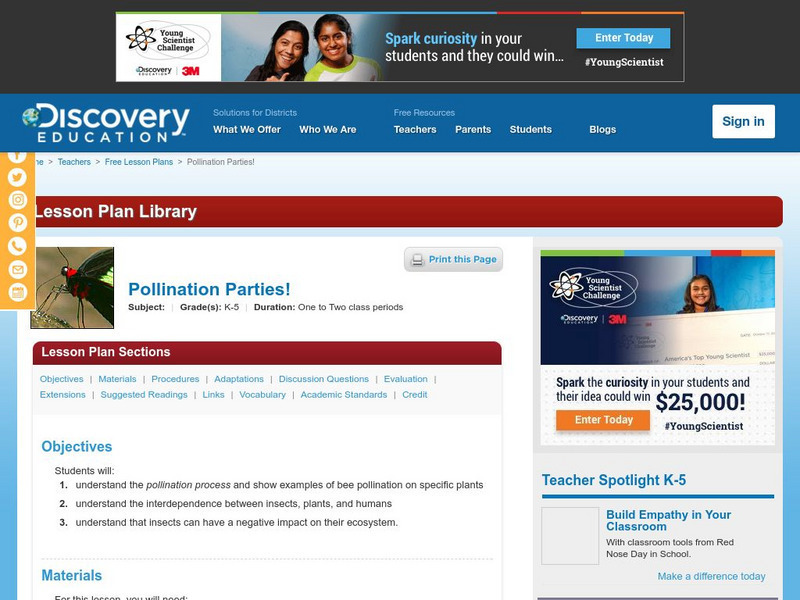
![De Paul University: Center for Urban Education: I Like Plants [Pdf] Unknown Type De Paul University: Center for Urban Education: I Like Plants [Pdf] Unknown Type](https://d15y2dacu3jp90.cloudfront.net/images/attachment_defaults/resource/large/FPO-knovation.png)

